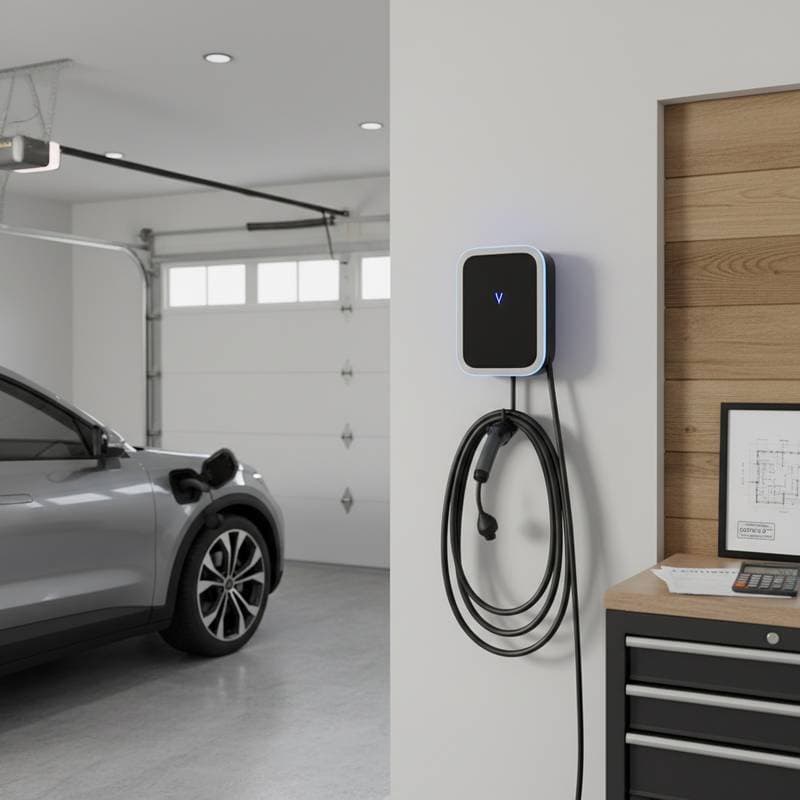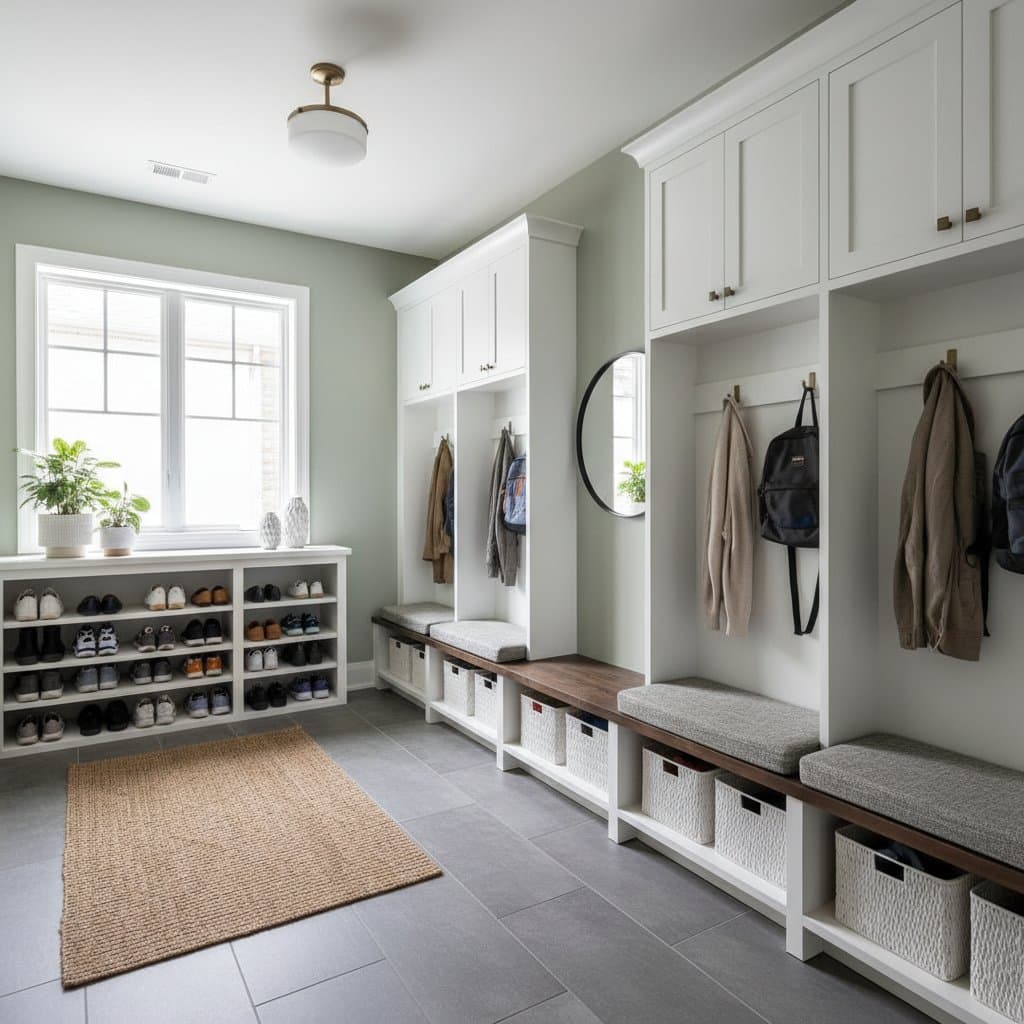EV Chargers: Unlock an 11 Percent Home Value Increase by 2025
Electric vehicle chargers represent a strategic upgrade for homeowners. These installations can elevate property value by up to 11 percent as electric vehicle adoption accelerates. Appraisers recognize this feature, and prospective buyers prioritize homes equipped for seamless charging. A Level 2 charger stands out as the optimal choice for enhancing appeal and preparing for future needs.
Step-by-Step Guide to Installing an EV Charger at Home
1. Assess electrical capacity.
Locate the main electrical panel and note its amperage rating, typically displayed on the interior door. Homes with 100 amps or more generally accommodate a Level 2 charger. Consult a professional if uncertainty exists regarding capacity.
2. Select the appropriate charger type.
Opt for a Level 2 model, which delivers faster charging suitable for overnight use. Level 1 options suffice for occasional needs but fall short for regular routines due to their slower pace.
3. Install a dedicated 240-volt circuit.
Engage a licensed electrician to extend wiring from the main panel to the installation site. This setup guarantees reliable power delivery without overburdening existing systems.
4. Secure the charger in place.
Position the unit on a sturdy wall adjacent to the parking area. Ensure the cable reaches the vehicle port while avoiding ground contact to minimize hazards.
5. Verify functionality.
Connect the charger to the vehicle and monitor the initial charging session. Observe for consistent performance, absence of error indicators, and no circuit interruptions.
6. Complete registration requirements.
Notify local authorities or utility providers as mandated. This step unlocks potential rebates and ensures compliance with regional standards.
Estimated Costs Breakdown
| Task | Typical Cost Range | Factors Influencing Price |
|---|---|---|
| Level 2 Charger Unit | $400 to $900 | Brand reputation, Wi-Fi integration, advanced features |
| Electrical Installation | $600 to $1,500 | Distance from panel, wiring route complexity |
| Permits and Inspections | $50 to $300 | Variations in local regulations |
| Overall Project Total | $1,000 to $2,700 | Local labor costs, necessity of panel enhancements |
Costs fluctuate based on geographic location. Properties in densely populated areas or those with aging infrastructure often incur higher expenses from required upgrades like panel expansions or underground wiring.
Deciding Between DIY and Professional Installation
Consider DIY installation when:
- A 240-volt outlet already exists in the garage.
- The charger connects via plug without circuit modifications.
- You possess the skills to handle safe mounting procedures.
Engage a professional for:
- New wiring runs or breaker additions.
- Panels approaching full load or requiring modernization.
- Assurance of warranty validity and regulatory adherence.
Professionals excel in precise load calculations, permit acquisition, and inspection coordination. They also verify that all components align with established safety codes. Self-performed electrical work risks invalidating insurance policies or manufacturer guarantees if issues arise.
Adapting to Regional Conditions
In colder regions:
Position chargers indoors to shield against freezing temperatures, which can reduce charging efficiency and stiffen cables. Enclosed garages or thermal barriers preserve optimal operation.
In warmer regions:
Select units designed for elevated heat tolerance. Incorporate shading elements or airflow systems to avert thermal buildup.
In storm-prone or coastal areas:
Incorporate rust-resistant components and protective enclosures. Elevate mounting positions to mitigate flood risks.
In fire-vulnerable zones:
Encase wiring within durable metal conduits. Steer clear of flammable mounting surfaces to enhance safety.
Regulations vary by locality concerning breaker specifications, wire thickness, and exterior placements. Contact the local building authority early to confirm applicable rules.
Enhancing Property Value Through Strategic Upgrades
Beyond immediate utility, an EV charger positions the home as forward-thinking and energy-efficient. It complements features like solar arrays and automated climate controls in real estate listings. Agents highlight this amenity to underscore technological readiness.
For imminent sales, integrate details about the charger into property descriptions and demonstrations. Prospective buyers value unobtrusive setups with intuitive access and informative signage.
For long-term residency, the investment yields daily convenience alongside utility incentives. Programs often provide credits for off-peak usage, amplifying financial returns.
Resolving Frequent Installation Challenges
Charger fails to activate:
Inspect the circuit breaker and connection points for disruptions. Reset components as necessary. Persistent tripping signals the need for expert evaluation.
Reduced charging velocity:
Confirm the use of a Level 2 configuration. Examine the cable integrity and ensure vehicle settings permit maximum rate.
Illuminated error indicators:
Refer to the user manual for code interpretations. Issues frequently relate to grounding faults or connectivity problems. Cease operation pending professional review.
Insufficient cable length:
Employ a retractable holder or compatible extension. Household cords pose safety risks and incompatibility.
Essential Installation Recommendations
- Align the charger with the vehicle's port for effortless connection.
- Maintain a minimum two-foot perimeter for adequate airflow.
- Mark the corresponding breaker for swift troubleshooting.
- For relocatable setups, detach plug-in chargers upon relocation.
- Document the process and approvals to share with future owners.
Sustaining Charger Performance Over Time
Routine care involves periodic cleaning of vents and connectors to remove accumulations. Conduct biannual inspections of cables for signs of deterioration or exposure.
Address any indications of excessive heat or material degradation promptly by halting use and seeking inspection. Manufacturers frequently release firmware enhancements for better performance and scheduling options. Enable Wi-Fi connectivity where supported to facilitate automatic updates.
Advancing Your Home's Appeal
To capitalize on rising property values, prioritize an EV charger as a worthwhile enhancement. Begin with a panel inspection and solicit estimates from qualified electricians. Inquire about available incentives, as utilities frequently subsidize initial expenses.
Post-installation, monitor consumption patterns via integrated applications or billing statements. This analysis refines usage strategies and maximizes cost efficiencies.
With electric vehicles proliferating, equipped residences gain a competitive edge. They offer practicality and environmental alignment, culminating in tangible value appreciation.
Frequently Asked Questions
How long does installation typically take?
Most projects span one to two days, depending on wiring needs and permit processing times.
Will an EV charger increase my electricity bill significantly?
Charging costs average $0.03 to $0.15 per mile driven, varying by local rates and vehicle efficiency. Off-peak scheduling minimizes expenses.
Can I install a charger in an apartment or condo?
Yes, with association approval. Shared or portable units often suit multi-unit dwellings.
Do all electric vehicles use the same charger?
Most employ the J1772 standard for Level 2, though Tesla models require adapters. Verify compatibility beforehand.
Is the value boost guaranteed?
Market data suggests up to 11 percent appreciation in charger-equipped homes by 2025, influenced by location and buyer demand.












